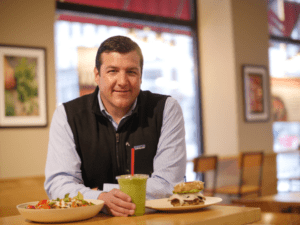
A few weeks ago, I was fortunate enough to attend the Massachusetts Conference for Women, where I found myself soaking in wisdom from the following, among others:
- Nobel Peace Prize-winner, Malala Yousafzai
- Sports Illustrated Sportsperson of the Year, Megan Rapinoe
- Leadership expert & TED talk phenom, Simon Sinek
- Author of the best-seller, “Educated,” Tara Westover
As with all conferences, main stage speakers are designed to wow. They delivered; what I didn’t expect, was that the most fascinating, applicable advice for everyday life to be found in a breakout session by Annie Duke, decision strategist, former World Series of Poker Champion & author. Her session, “Thinking in Bets: Lessons in Unemotional Risk-Taking and Decision-Making” centered around one main question:
Do you know when to cut your losses?
She elaborates (courtesy of the event program): “In poker and throughout our lives, we are more successful when we maximize the time spent in favorable situations and minimize time in unfavorable ones. But many of us are too quick to quit when we are winning, or refuse to walk away from a losing game.”
Annie’s found that the key to long-term success is to think in bets. My takeaways from her workshop are below, adapted from her slides.
What strategies do you employ to avoid these decision-making pitfalls and take a long-term view?
Annie’s Tips
1. The average person spends a significant amount of time on trivial decision making.
- What to eat? 150 min / week
- What to watch on Netflix? 50 min / week
- What to wear? 90 – 115 min / week
2. This leads to time accuracy trade-off.
We flip back and forth, agonizing over questions like ‘which show will I like best?’ when increasing accuracy, in fact, costs us something much more valuable: time.
3. Employ ‘The Happiness Test’ to determine the value of the time accuracy trade-off.
Ask yourself: Will the outcome of this decision, good or bad, have a significant effect on my happiness in a year?
If no, you can make a speedy decision. Trade accuracy for saving time when it won’t impact your long-term happiness.
If yes, slow down and save time in order to improve your accuracy.
4. When a decision is hard, it’s actually easy.
When weighing 2 close options, you can’t really go wrong as the difference between the two is so small.
She used the example of deciding between a trip to London or Paris – both are great options, so just choose [don’t spend hours comparing and contrasting] and don’t look back.
5. Employ ‘the only option’ test.
For big decisions, ask yourself: “if this were the only option I had, would I be happy with it?”
6. To narrow options, use a ‘menu strategy.’
Spend time on the initial sorting – this is the heavy lifting and the place where you’ll get the most value out of slowing down. Once you’ve sorted and have one or more good options, there’s no penalty for speeding up.
Duke ultimately calls this process ‘decision stacking:’ finding ways to make easy-to-make, low impact decisions in order to free space for harder-to-quit, higher impact decisions.
I’m committed to employing this approach in 2020 and hope it’s beneficial for you as well. Annie’s latest book, “Thinking in Bets” can be found on Amazon. Thanks for sharing your wisdom, Annie!





